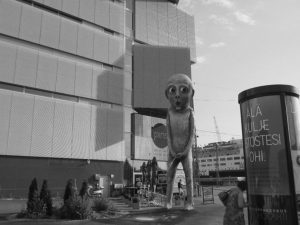Presenting my research project on “Narrating the Urban Waterfront in Crisis” today (24.9.) at TIAS, University of Turku, which I started in January of this year. What are the aims, what are the projected outcomes, and why does it matter?
It was an eye-opener to go back to the application for TIAS I wrote in 2016, look at what I envisioned and promise then, and see how aims, objectives, and focus have changed during the past few years.
One aspect is the increasing urgency related to climate change, and a range of relevant articles related to contemporary (city) literature that came out recently.
And then there is also a range of relevant books that has come out, changing the outlook of my focus – in Finnish literature, ao. with the recent publication of Beta – Sensored Reality (2018) and in the case of NY, that of New York 2140.
And why does it matter – not only for an academic community, but also for a broader audience or professionals with the planning and policy community? In part, the answer lies in getting at a better understanding of how narratives in urban planning, policy, and literature of (future) cities are structured and used, which may impact the assessment of ongoing planning and policy practices, and more generally visions of urban futures. It also matters because different textual genres have different limits and different possibilities in how they are able to posit alternative futures – so what can be expected from particular textual genres, and are there more effective ways to communicate (city) futures? And finally, I see an importance in focusing on the language with which city futures are framed, positing the crisis of future challenges in terms of a ”crisis of the imagination”, but with a set of concrete case studies and narrative methods.


